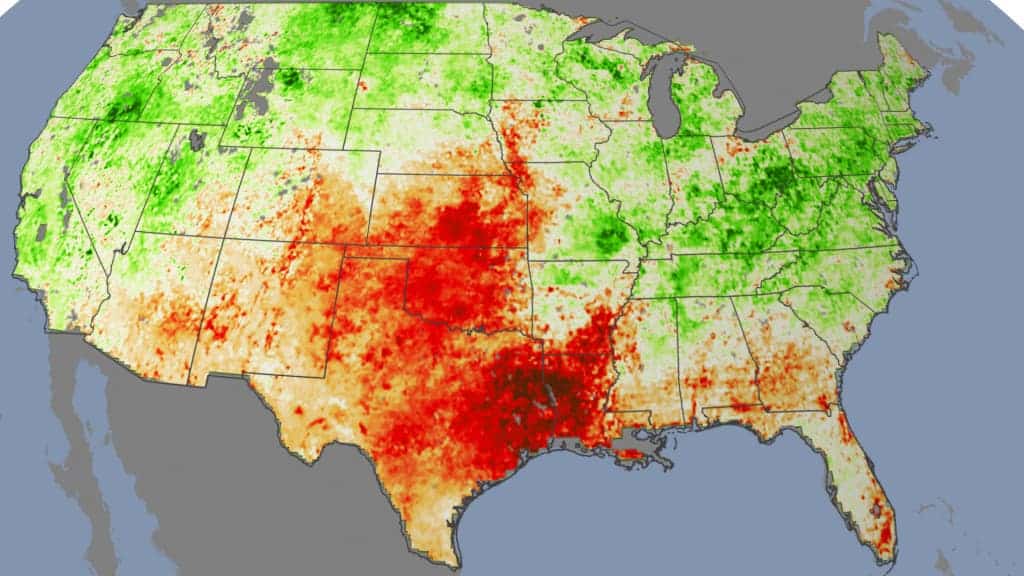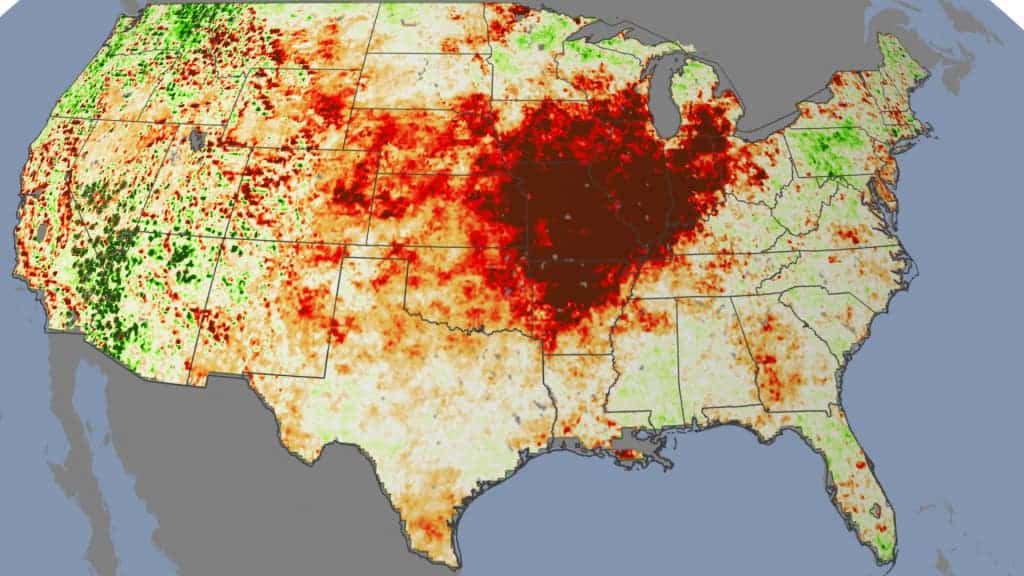It was a warm, drought plagued year – in July 2012, farmers in the U.S. Midwest and Plains regions watched crops wither and falter, after a series of unusually high temperatures and low precipitations. However, as the lack of rain continued to make its mark scientists observed another indication of drought in data from NASA and NOAA satellites: plant stress.

Plant stress measurement is the quantification of environmental effects on photosynthesis and plant health. Basically, when plants are subjected to less than ideal conditions, they are considered to be under stress – a phenomena which affects their health, crop quality and yields. Healthy plants require a quantity of water each day to manage, and as climate change accentuates, plants become more and more stressed. Scientists with the U.S. Department of Agriculture’s Agricultural Research Service (USDA-ARS) have developed a way to use satellite data to map that plant stress; the maps they have devised will help in drought forecasts, and crop yields estimates.
“Crop drought monitoring is of high practical value, and any advance notice of drought conditions helps the farmer make practical decisions sooner,” says Steve Running, an ecologist at University of Montana in Missoula.

A new animation (which you can see at NASA – here) shows the evolution of drought in the past 2 years, culminating with this year’s drought – the most significant and damaging in the past 25 years. In August, over 60 percent of farms were in areas experiencing drought, and by mid-September USDA had designated more than 2,000 counties as disaster areas; and things aren’t expected to get any better any time soon.
“2012 was record-breaking, this was just a huge event,” says Martha Anderson with USDA-ARS in Beltsville, Md., who is working with a team to develop the plant stress indicator for drought and presented the research Dec. 5, at the American Geophysical Union meeting in San Francisco.
The 2012 event was described by researchers as a flash drought – evolving quickly and unpredictably. Soil moisture was already low, and as the heat wave started in May, drought abruptly followed.
“We think there’s some early-warning potential with these plant stress maps, alerting us as the crops start to run out of water,” Anderson says. Signals of plant stress may often appear first in satellite-derived maps of vegetation temperature before the crops have actually started to wilt and die. “The earlier we can learn things are turning south, presumably the more time we have to prepare for whatever actions might be taken.”






